0664 But, there is a trick to turning what I think into what I say.
I think my impression2a, feelings2a, notions2b, emotions2b and my judgment2c.
I say my judgment2c. My judgment2c is not the same as what I think. My judgment2c is an element of what I think . What I think consists in the entire interscope. My judgment2c is the element that ends up getting turned into spoken words.
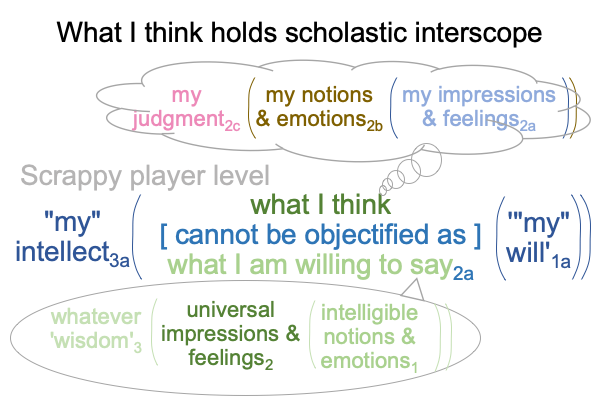
0665 My judgment2c is a triadic relation consisting of three elements: relation, what is and what ought to be. When each element is assigned to one of Peirce’s categories, the judgment is actionable. An actionable judgment unfolds into a nested form according to the assigned categories.
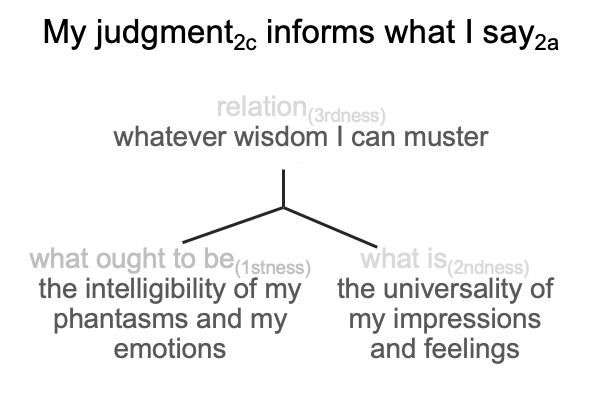
0666 Everyone has spontaneous impressions2a and feelings2a that seem more actual than the situating perception2b, except for two types of people: experts and those who have submitted to operation sheepskin’s targeting of normal context3a (of “our” intellect3a) and potential (of “our” will1a).
0667 When an operation-sheepskin affiliated event is staged, the event is crafted as to produce sensations2a and perceptions2b that cohere with the media report and narrative. The interscope for how humans think has already been mapped out, intentionally (for the event) and without apparent intention (for the hidden agenda), by the perspective-level actuality2c of the post-truth interscope.
0668 What the media says about a staged event inscribes a judgment2c that is subtly different from human judgments.
Here is a picture.
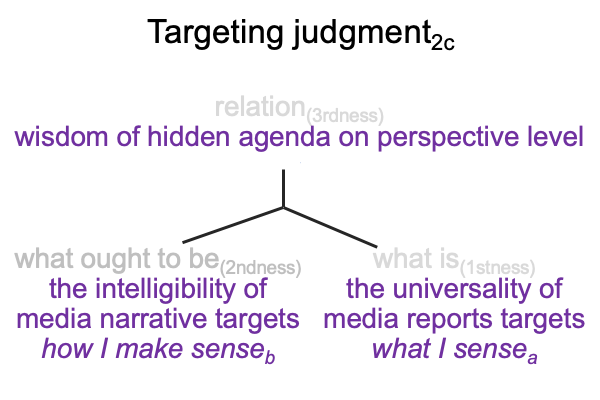
How I make sense targets the intellect3a of the scrappy player. What I sense targets the will1a.
0669 Take a long look at my judgment2c and the targeting judgment2c and see whether you can locate a subtle difference.
Now consider the following.
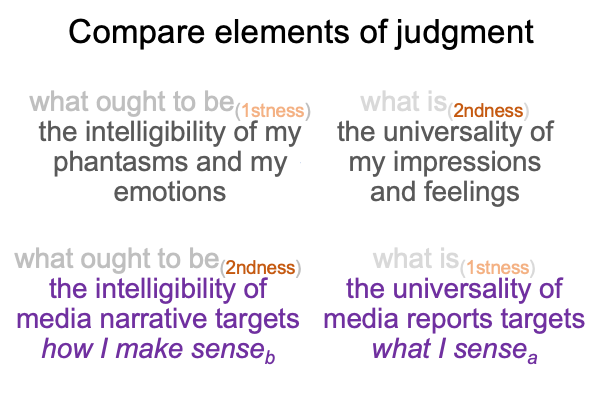
0670 For my judgment2c, what ought to be, the intelligibility of my perceptions, is assigned to the category of firstness, the realm of possibility, for right reason. No one person ever knows whether one’s perceptions are correct. My notions2band my emotions2b constitute the location where my fallibility plays out. My judgment (relation, thirdness) offers something universal (what is, secondness) and the potential of something intelligible (what ought to be, firstness).
For the targeting judgment2c, what ought to be, the media narrative, is assigned to the category of secondness, the realm of actuality, for sinister reason. The impact of an interventional sign-vehicle (SVi) depends on how believable the sign-object appears to be (SOi), otherwise the targeting interventional sign-interpretant (SIi) will not engage. The media offers something intelligible (what ought to be, secondness) that is supposed to overwhelm my own phantasm and emotions (what ought to be, firstness) is the same way that actuality triumphs over possibility.
0671 What does this imply?
The scrappy player accepts his own fallibility.
Those who engage in propaganda cannot admit their fallibility.
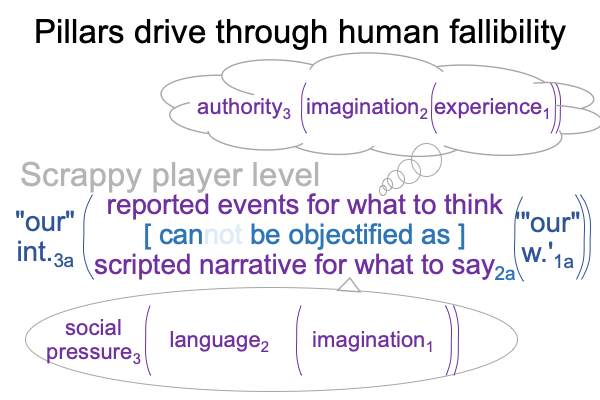
Perhaps, this is a first approximation for how the pillars of the infrastructure of belief penetrate the scrappy player’s mind.
